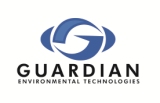
MUST READ: What Happens If Alkali Metals Are Exposed to Water?
Are you the person responsible for the design and implementation of your facilities emergency response plan?
If you are, then you know that having the most efficient products to support your procedures is just as important as the procedures you’ve written.
Meet Kevin, one of our clients. He no longer uses just conventional hazmat products with his facility response plan.
Kevin told us that basic chemistry was the foundation of his decision.
He said: “whether you need to respond to and conduct the removal of a large or small chemical spill, basic chemistry tells you that using just conventional hazmat products as part of your facility response plan may not be enough.” As the Environmental Health and Safety manager for a large manufacturing facility, Keven said, “all industrial facilities are required to have and implement the most efficient facility response plans possible. Using only conventional hazmat products can diminish that objective.”
When Kevin is training new hires, he uses this simple video of how dangerous a chemical like potassium metal really is when exposed to water: Potassium water 20.theora.ogv
He also uses this alarming video which shows how cesium explodes when exposed to water: Cesium water.theora.ogv
Kevin came to us to help him find a more suitable solution to what he had been using. He had been using firefighting foam exclusively. Since foam is made up of three ingredients – water, foam concentrate and air, he said: “using a water-based spill control product like fire-fighting foam isn’t exactly the best way to respond to a reactive chemical spill.”
This is where the advantages of a specialty product like PetroGuard come in.
Kevin was impressed with PetroGuard because it is a molecular enhanced absorbent that does not contain a neutralizing agent, which in of itself can produce a chemical reaction. As an absorbent, PetroGuard treats, truly permanently encapsulates, and absorbs liquid chemical spills on a molecular level and therefore lessens the chemicals’ ability to produce acid vapors.
In addition to that, PetroGuard has the capacity to absorb over 400% its own weight making it more efficient during the process as well as presenting a cost-effective spill response.
As part of his emergency response plan, we recommended to Kevin that he build in the application of PetroGuard prior to the use of firefighting foam. Then the foam is applied on top of the PetroGuard as an added measure of sealing in any residual vapor that may be produced. Once the spill is under control, attention can be devoted to collecting the solidified matrix and packing it for easy disposal.
The overall effectiveness of PetroGuard made Kevin and his head honchos very happy.
If you’re still not yet convinced on how effective PetroGuard can be, click here for a link that illustrates its features and advantages. You can even find a list of water reactive chemicals that PetroGuard is compatible with.
For more in-depth and effective suggestions to responding to reactive and other hazardous chemical spills, we would be more than happy to assist you. Just give us a call at (860) 350-2200 or contact us here.

